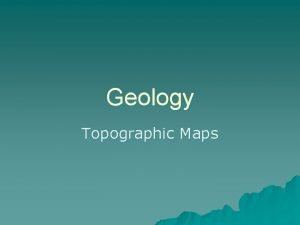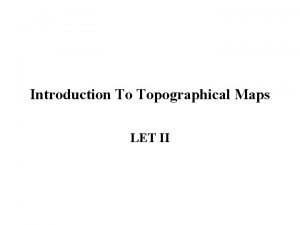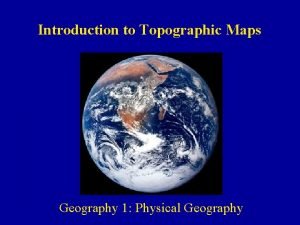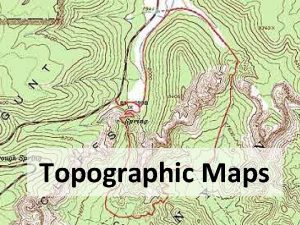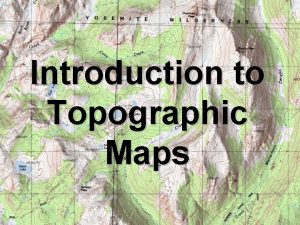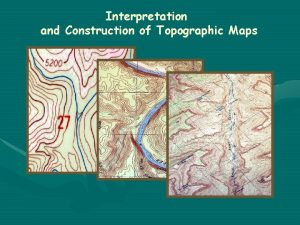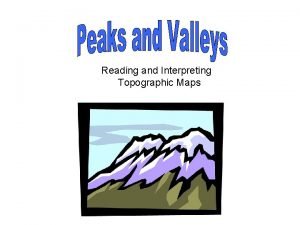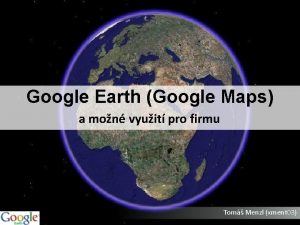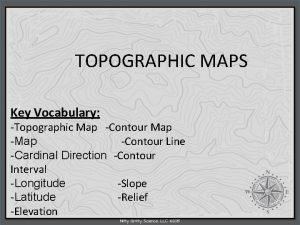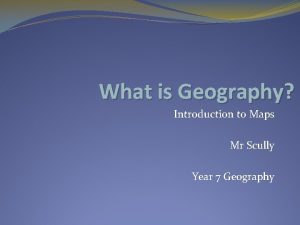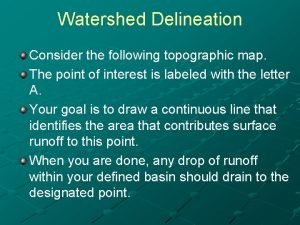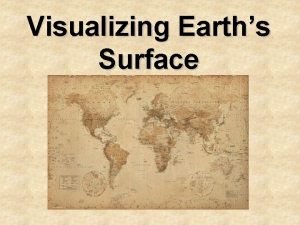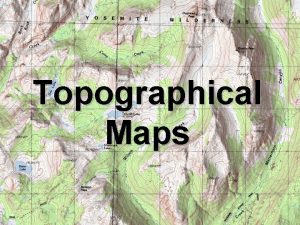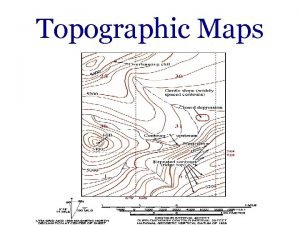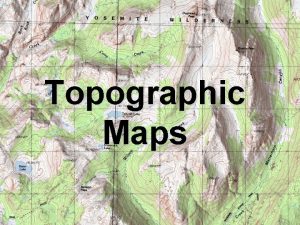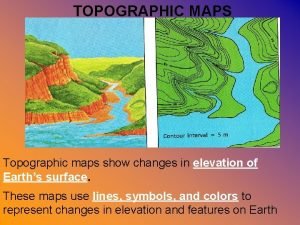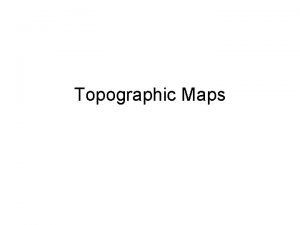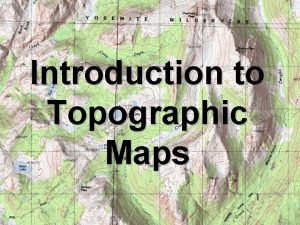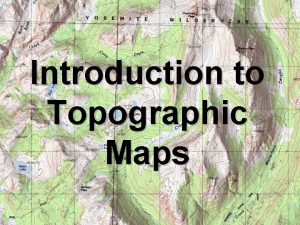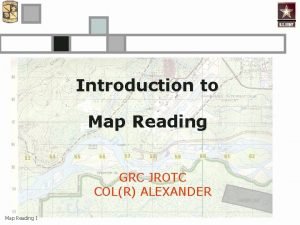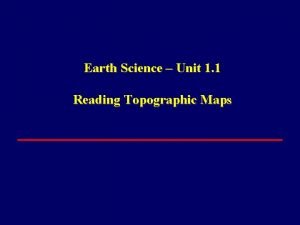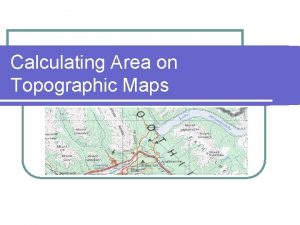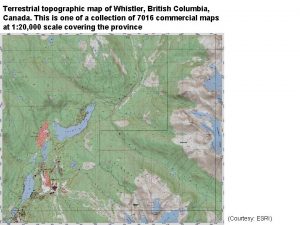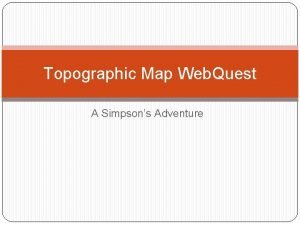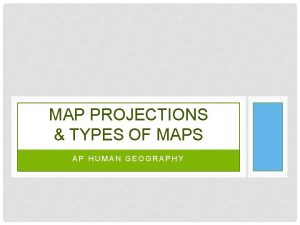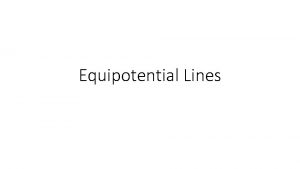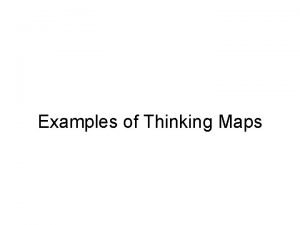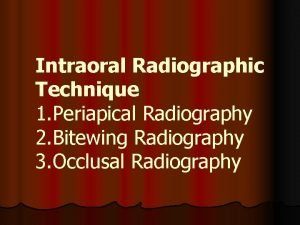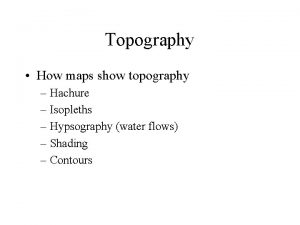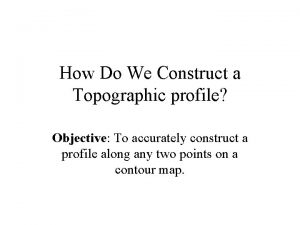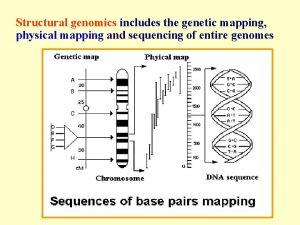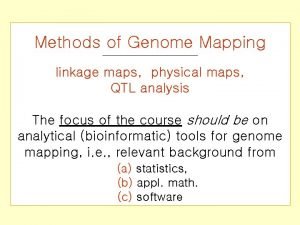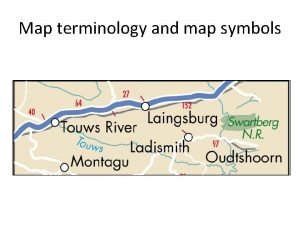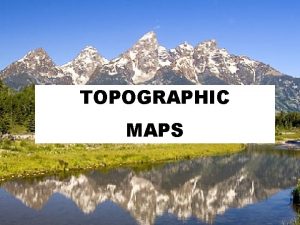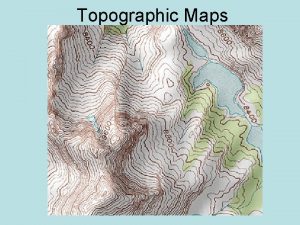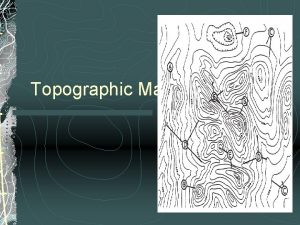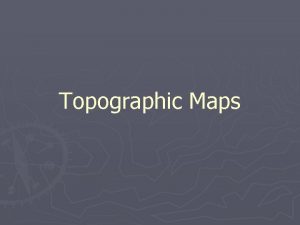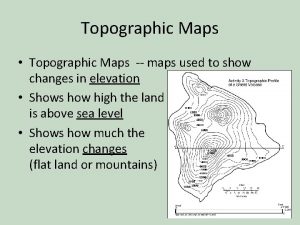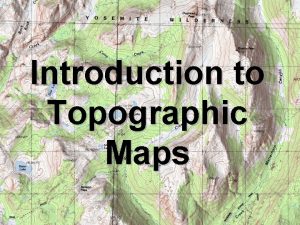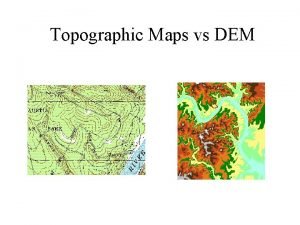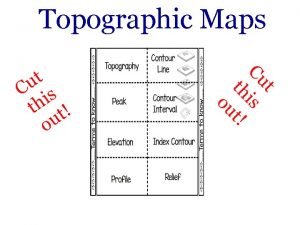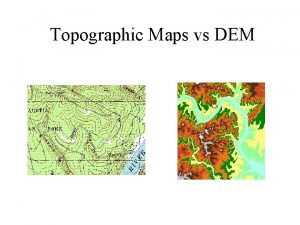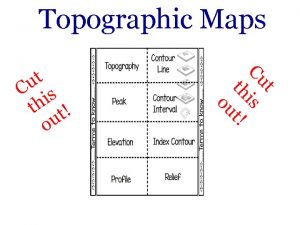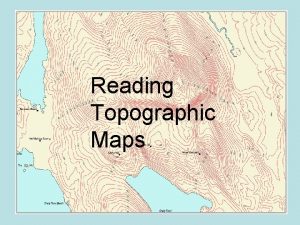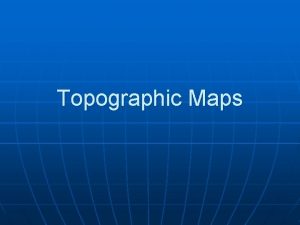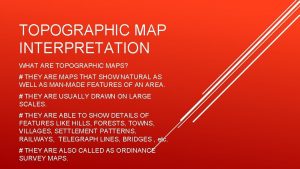Topographic Maps What is a Topographic Map A











































- Slides: 43

Topographic Maps

What is a Topographic Map? A topographic map shows the shape of the Earth’s surface by using contour lines.

Contour Lines Contours are imaginary lines that join points of equal elevation above or below sea level.


Let’s take a walk up a hill!

We’re now at an elevation of 100 meters. 100 m

Let’s keep going! 100 m

Now we’re at 200 m 100 m

Shall we march on? 200 m 100 m

We’ve made it to 300 m! 300 m 200 m 100 m

On to the peak! 300 m 200 m 100 m

We’re on the peak, but what’s our elevation? 300 m 200 m 100 m

Any ideas? Let’s add contour lines for every 50 meters and see if that helps. 300 m 200 m 100 m

We know that we are above 350 m, but less than 400 m. 350 m 300 m 250 m 200 m 150 m 100 m 50 m

Let’s head down the hill, it’s getting late! 350 m 300 m 250 m 200 m 150 m 100 m 50 m

Now what’s our elevation? If you said somewhere between 200 m and 250 m you are right! 350 m 300 m 250 m 200 m 150 m 100 m 50 m

Let’s try this again! 350 m 300 m 250 m 200 m 150 m 100 m 50 m

What’s our elevation now? If you said 50 m or just under, you’re right! 350 m 300 m 250 m 200 m 150 m 100 m 50 m

Let’s now look at the same hill, but the way we might see it from an airplane!


Each color change represents a 50 meter increase.

Now, let’s try the same hike! Our elevation is 0 meters.

Now what is our elevation?

If you said more than 150 meters, but less than 200 meters your right!

Let’s go a little higher.

Think you know our elevation now? More than 300 meters But less than 350 meters

If we were standing on the peak, what would be our elevation? • More than 350 meters, less than 400 meters

Contour Interval • The difference in elevation between two adjacent contour lines 10

Index Contour Lines • Contour lines that are usually darker and have the elevation labeled


How Steep?

TO DO:


Grab a piece of paper and write your answers to the following questions. Ready?

1. Could the elevation at the peak (B) be 1410 meters? E C D B 1200 m A 400 m F 1000 m 800 m 600 m

2. What is the elevation at (E)? E C D B 1200 m A 400 m F 1000 m 800 m 600 m

3. What is the elevation difference between (A) and (B)? E C D B 1200 m A 400 m F 1000 m 800 m 600 m

4. If you walked a straight line from (D) to (C) would you walk over a ridge or down a valley? E C D B 1200 m A 400 m F 1000 m 800 m 600 m

5. Just looking at the map, would it be easier to head down from the peak going North, South, East, or West? N E C W D B E 1200 m A 400 F 1000 m 800 m m 600 m S

• 1. No : The elevation must be under 1400 meters, but over 1300 meters. • 2. about 400 meters

• 3. (A) is probably close to the 750 meter line, (B) is above 1300 meters. The difference between the two would probably be about 550 m.

• 4. More than 700 meters and less than 800 meters. • 5. Down a valley: If the contour lines point up the slope it’s a valley, if they point down the slope it’s a ridge.

• 6. East: When contour lines are close together that means there is a steep slope, the further apart the lines, the more gentile the slope and therefore an easier walk! Go east!
 Two different contour lines cannot cross because
Two different contour lines cannot cross because Let ii
Let ii Large scale vs small scale map
Large scale vs small scale map Interpreting topographic maps worksheet
Interpreting topographic maps worksheet Gradient contour lines
Gradient contour lines Rf topographic map
Rf topographic map Contour gradient
Contour gradient Topographic maps show
Topographic maps show Topographic maps vocabulary
Topographic maps vocabulary Topographic map
Topographic map Independent practice: topographic maps
Independent practice: topographic maps Google reittihaku
Google reittihaku Topographic map definition ap human geography
Topographic map definition ap human geography Topographic map watershed delineation
Topographic map watershed delineation Hachured contour lines on a topographic map represent
Hachured contour lines on a topographic map represent A topographic map is a two dimensional model
A topographic map is a two dimensional model Topographic map worksheet answer key
Topographic map worksheet answer key A topographic map is a two dimensional model
A topographic map is a two dimensional model Maps that show changes in elevation of earth’s surface
Maps that show changes in elevation of earth’s surface Benchmark topographic map
Benchmark topographic map A topographic map is a two dimensional model
A topographic map is a two dimensional model A topographic map is a two dimensional model
A topographic map is a two dimensional model Contour lines
Contour lines Glen samaai
Glen samaai Projection psychology
Projection psychology Calculating area on a topographic map
Calculating area on a topographic map Thematic map meaning
Thematic map meaning Whistler gis map
Whistler gis map Orienteering compass
Orienteering compass Topographic map webquest answer key
Topographic map webquest answer key Human geography types of maps
Human geography types of maps River topographic map
River topographic map Electric potential isolines
Electric potential isolines Remote sensing ap human geography
Remote sensing ap human geography Tree map thinking process
Tree map thinking process Map
Map Chapter 41 intraoral imaging
Chapter 41 intraoral imaging Topographic hachure
Topographic hachure How to construct a topographic profile
How to construct a topographic profile Anatomi adalah ilmu yang mempelajari tentang
Anatomi adalah ilmu yang mempelajari tentang Cause and effect multi flow map
Cause and effect multi flow map Genetic vs physical map
Genetic vs physical map Genetic map vs physical map
Genetic map vs physical map Map symbol definition
Map symbol definition
